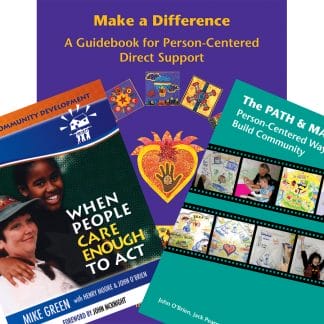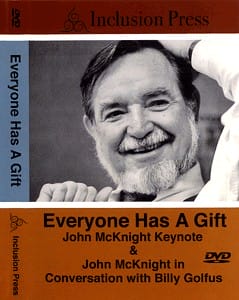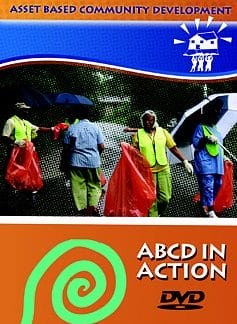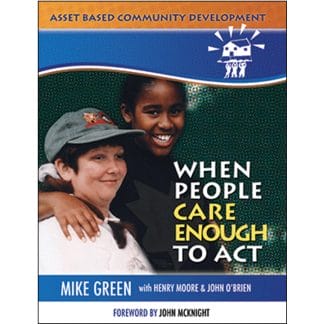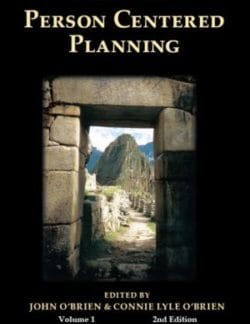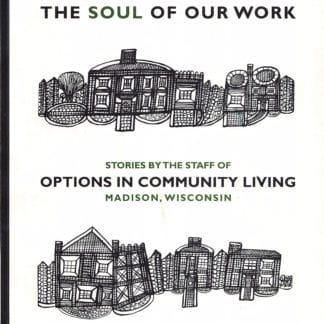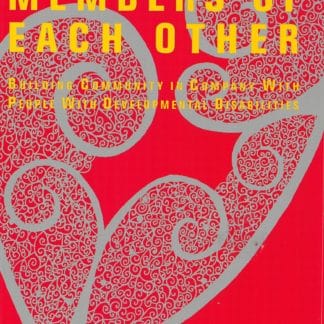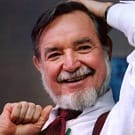
John McKnight was emeritus professor of education and social policy and co-director of the Asset-Based Community Development Institute (ABCD) at DePaul University. He is the coauthor of Building Communities from the Inside Out and the author of The Careless Society. He was a community organizer and served on the boards of several national organizations that supported neighborhood development.
Well, I was born and raised in Ohio. Then I came to Northwestern University as an undergraduate and, after that and serving in the military, I worked in neighborhoods in Chicago as a neighborhood organizer. And after doing that for quite a number of years… so mid-career, I was asked to come to Northwestern University and help them start a Center for Urban Affairs. They wanted to have somebody who’d been a practitioner to join the people who are academics. And so I went there and carried on my interest in neighborhoods and local communities and developed a research program that evolved into something called the Asset-Based Community Development Institute. And that’s… that organization is at Northwestern.
We have a website, for anybody who’s interested in looking ABCDInstitute.org, and that institute has focused on what makes successful small communities. We’ve done research all over the country and do now a lot of training and consultation with local groups. Who are interested in how they can become stronger.
I spent a lot of years in neighborhoods organizing with people, neighborhood organizations where they could become more powerful and get more of the things done that they needed to have done. And most of these neighborhoods were neighborhoods where you would say the people would be working class or lower income. And that experience, of course, led me to see how much ability and capacity and commitment people in neighborhoods had.
Then, when I went to the university in 1969, after having spent about twenty years in the neighborhoods, I was very surprised, because what I found there was that if you looked at research about urban neighborhoods, that universities were doing, it was all about what was wrong, the problems, the defects, the issues, and if you looked at the same neighborhoods where I had come from, from a university, and you looked at their research, they were always defining these places as “needy,” and that neediness that they defined in their research and they would define it by doing studies of how many teenage pregnant girls are there, how many drug addicts are there, how many below code houses are there; and on and on and on and on.
That to me it was just apparent that you could never… understand urban neighborhoods if you looked at what the universities were telling you was the important data, because all they knew about was what was wrong. I often use a half-full glass as an example of that. They were always studying the empty half. They seemed to have no knowledge of the full half. And therefore, I thought, if I’m at a university, the thing I can do that will be useful will be to document the full half.
And so we began to do research on the nature of the activities that people did locally that made things better. Because all the university research was sort of about things that were wrong that outsiders could come in and fix without much idea that there were assets there in the neighborhood, that people had capacities, and a lot of what could be done and was done to improve things was being done by the people who were there. So the university approaches at that time, they were focused on deficits, were studying needs, the empty half of the glass.
And so we said we’ll study the full half of the glass and we said those were the assets. And so that’s how we got the name that we created: The Asset-Based Community Development Institute. And we went all across the United States in urban neighborhoods and collected the case studies and stories from local people about what they had done to make things better. And then, based upon that research, we were able to say here, number one, is what people have been able to achieve.
Here’s what they have been able to do with their resources about improving health, about increasing security, about lifting up culture, about doing things for kids. Here are all the things they could do, and also we were able to look at those stories and say: What did they use when they did it? I think we asked that question because the social services agencies and the health agencies and the universities doing their needs surveys, right, sort of acted like there was nothing there, that there weren’t any resources there, and their studies then would tell what outsiders had to bring in, right, rather than what would enhance and mobilize the local residents’ and citizens’ capacity to be successful and… make things better.
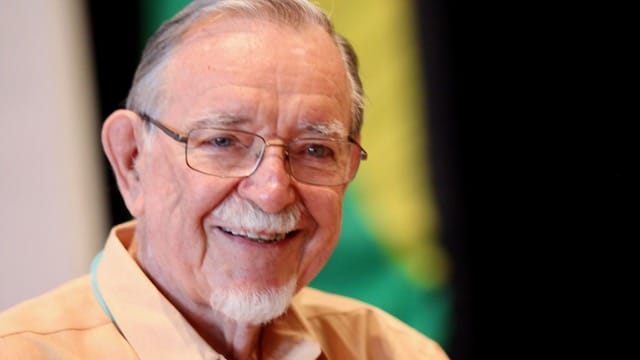
Spme of John’s Collected Articles
johnmcknight.org › publicationsPublications – John L McKnight
xhttps://youtu.be/bmRODyzy3fw

xhttps://youtu.be/bmRODyzy3fw
